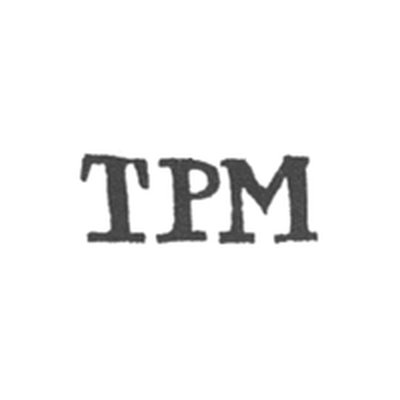
Image 020701-01-01
Used between 1845 and 1847.
One reason for the success of Carl Tielsch straight from the beginning was that he had a very large product range, starting with normal household pieces, going over hotel porcelain and ending with luxury goods. In addition, the facility always had the best designers and decorators. At first, Tielsch only marked his products with the initials "TPM", which stood for Tielsch Porzellan-Manufaktur. As that appeared similar to the "KPM" used by the Königlich Preußische Porzellanmanufaktur, the two snakes curling around a stave were added at first, only to be replaced completely by the eagle from 1847 onwards.
The staff is of course a caduceus. In classical mythology this was the staff carried by Hermes as messanger of the gods; in more recent times it has become an emblem of the medical profession. Thanks to Jonn Bavis for the info.
The first eagle mark was similar to the mark used by the Porzellanmanufaktur F.A. Schumann, a firm located in Berlin-Moabit since 1836. Tielsch was very fond of their products and copied their style for some time. But the depiction of the eagle also caused problems and the director of the KPM factory sent a complaint to the Ministry of Finance. This forced Tielsch to change his mark again in 1850. While the new mark could still be mistaken for the 'KPM eagle', the Ministry decided that it was different enough to please them and further complaints from KPM Berlin were turned down.
In 1882, the member of the Chamber of Commerce (thus entitled to carry the title of Kommerzienrat) Carl Tielsch died at the age of 67. Quite a few of his workers and citizens of the town mourned his death as he had been involved in a lot of social work and had introduced the workers and disability pension fund. His son, the businessman and reserve officer Egmont Tielsch was also engaged in social work and had earned himself a very good reputation. He continued the work of his father and was soon able to start planning an additional production location in Altwasser that was then officially opened on January 1st 1906.
This additional location was also a test facility, and later that year the director of the plant Georg Faist together with Fougeron from Montereau (France) and the Vereinigte Chamotte Fabriken vorm. C. Kulmitz GmbH in Saarau successfully completed trials on a technical revolution: they were able to present the first fully functional and effective coal-fired tunnel kiln for porcelain, with an impressive overall length of 64 meters (209.97 ft). Because of his outstanding services for the industry, in combination with his social work, Egmont Tielsch was awarded the Roten Adlerorden IV. Klasse (Red Eagle Medal, 4th class) and raised to peerage.
His new title and name of Ritter und Kommerzienrat Egmont von Tielsch gave the firm another boost in sales, and in 1913 the company reached its peak employee count with 1,500 workers, including 270 potters and 110 decorators. Shortly before the outbreak of the first World War in 1914, the product catalog shoved 1,637 porcelain pieces. One may think that his number is not impressive, but one should keep in mind that a coffee pot was counted as "one piece" even if it was avalable in 196 variations (including all different sizes and decorations).
The company managed to get through the years of war very well until 1917. The town officials then ruled that Tielsch should reduce his capacity to 60 percent as to preserve resources. And as to make up for the loss in income, he should also think about changing the firm into a corporation, something Egmont had been thinking about anyway.
After the change in company status some well-known people became shareholders of the corporation like director Georg Faist himself. Another shareholder was the banking house run by the Arnold brothers, the Bankhaus Gebrüder Arnold in Dresden, which also owned parts of the firm of Porzellan- und Feinsteingutfabrik Max Roesler in Rodach (Bavaria). Finally there was Hugo Auvera, himself one of the directors from the company of C.M. Hutschenreuther in Hohenberg (Bavaria).
Auvera greatly influenced the company, for example the C.M. Hutschenreuther items sold under the Black Knight label (owned by US importer Graham & Zenger) with the addition "Waldenburg Studios" were actually made by the Tielsch factory. In this constellation, the company prospered until the stock market crash in 1929 when nearly all customers were unable to pay for their orders. And that resulted in a hard time for the company, which was forced to slowly decrease the workforce to around 1,200 people in 1930. It was the same year in which Egmont von Tielsch died and his seat in the supervisory board was taken over by his son, Herbert von Tielsch.
During 1932 Tielsch merged with Hutschenreuther (another decision influenced by Hugo Auvera) and the factory in Altwasser became a division of the C.M. Hutschenreuther company, still keeping its workforce at a constant number of 1,200 employees. Everything went well for the next few years, but on May 8th 1945 the town of Waldenburg was occupied by Russian troops and was put under Polish government.
The Tielsch family fled, abandoning their castle Reußendorf in the process; the C.M. Hutschenreuther AG lost the complete facility in Altwasser and was forced to expand the Porzellanfabrik C.M. Hutschenreuther AG, Niederlassung Arzberg factory to compensate for the loss in production capacity. The factory there continued to use the mark which included the initials "C.T." with the eagle for a short time, an example is shown below.
At first, parts of the facility were dismantled by order of the Russians but then the facility continued to produce again with the help of a few remaining German workers. Now under Polish supervision and run by Jan Kachniewicz, they used one of the last Tielsch marks with the addition 'Made In Poland' until 1952 when the facility was completely nationalized. They also used a mark showing "Tielsch Walbrzych" which confuses some people, but one should hold in mind that the town of Altwasser had been merged into the town of Waldenburg back in 1920.
The participation of the state in the business secured funding for research and renewal of older technology and for the following fourty years, the facility was one of the major production locations for Polish porcelain and managed to establish a very good international reputation for its quality and craftmanship.
Starting in 1992, the facility was reprivatized and changed into a limited company. The main shareholders are the Swierczynski and Kulakowski families who had for a long time been involved in the business as workers and directors. 15 percent in shares remained in the hands of the Polish state.
The business was fully privatized in 2007. Ever since, the business has been relatively successful in trying to defend its position against foreign competition, especially from China.
Danuta Kubiak who lives in Wrocław (Poland) brought to my attention that the name "Stary Młyn" (Old Mill) often used for the former town of Altwasser (engl. "Old Water") is wrong. Even if it would be correctly translated as "Stara Woda" in Polish, the actual name today is "Stary Zdrój" (engl. "Old Spa") because of the healing springs there which are in use since the 18th century. Altwasser originally was a small town six kilometers to the north of Waldenburg (today Wałbrzych) but between 1920 and 1928 it slowly became a part of it.
When dating the Tielsch marks is it of utmost importance to carefully check the exact mark and not jump to conclusions. Even if a mark may seem "similar" to one found under a specific date, check if the exact mark was not used later. A perfect example are the marks used from 1875, 1887 and 1909 respectively which all used the same eagle with different types of additions. As mentioned above, the town of Altwasser became part of the city of Waldenburg in 1920, so Tielsch or Kachniewicz marks showing "Waldenburg" or "Wałbrzych" instead of "Altwasser" can also be found.
In case you have not noticed yourself, most Tielsch items claimed to be Nazi memorabilia are modern day fakes. Don't let yourself be fooled into believing the nonsense spread by some sellers, simply do your homework and you will be able to hold apart fakes from originals in next to no time!

Image 020701-01-01
Used between 1845 and 1847.
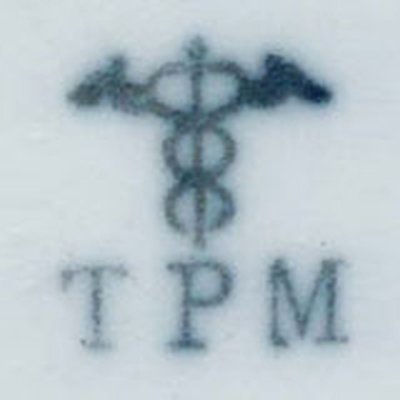
Image 020701-01-02
Used between 1845 and 1847 (some sources say even up to 1870).
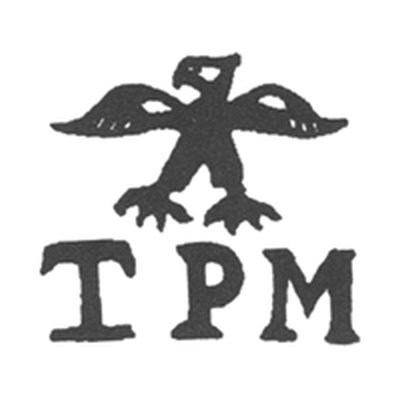
Image 020701-01-03
This version with a more stylized type of eagle was only used in 1847. Note the overdone lower serife of the "T"
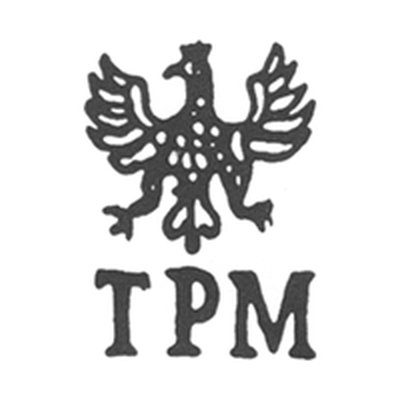
Image 020701-01-04
Used between around 1847 and 1850, without orb and sceptre.
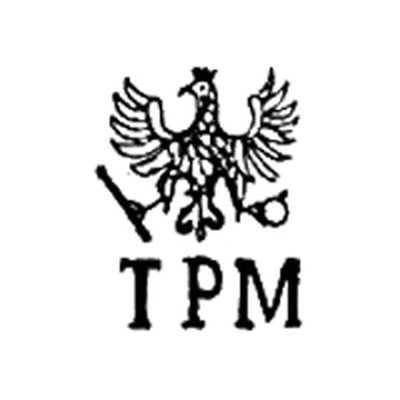
Image 020701-01-05
Used between around 1847 and 1850, with orb and sceptre
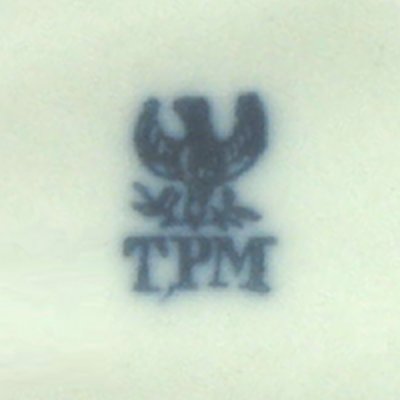
Image 020701-01-06
Used from 1850 onwards, here a clear example.
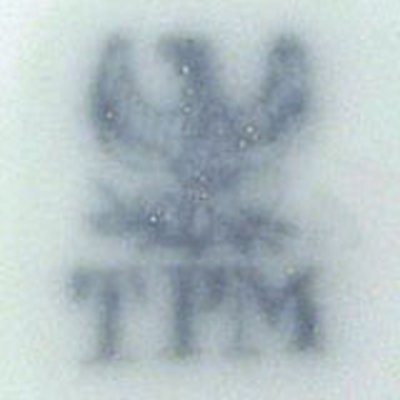
Image 020701-01-07
Used from 1850 onwards, smudged example.
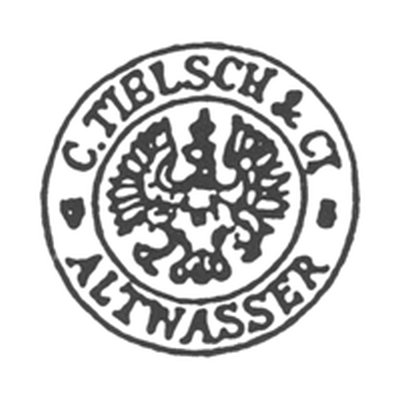
Image 020701-01-08
Used around 1860.
(Picture by Julija Michailova)
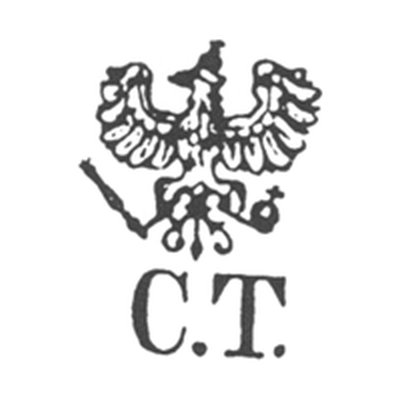
Image 020701-01-09
Used between 1870 and 1900.
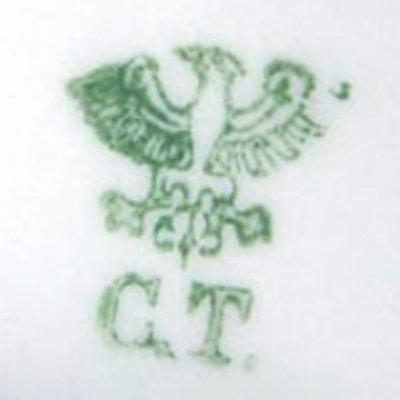
Image 020701-01-10
Used between 1875 and around 1900, registered at the RWZR on October 18th 1875 (one of the first RWZR registrations, no number given).
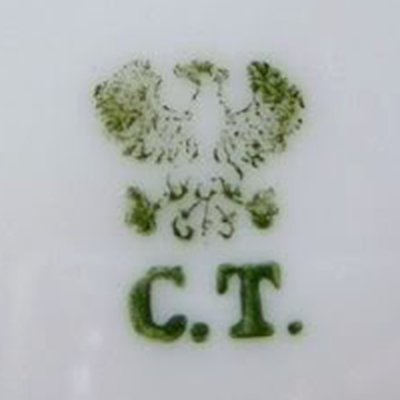
Image 020701-01-11
Used between 1875 and around 1900.
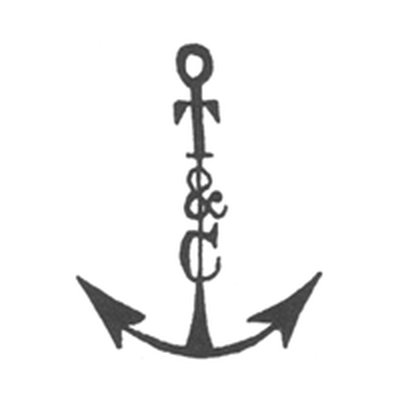
Image 020701-01-12
Registered at the Königliches Handelsgericht Waldenburg on May 8th 1875.
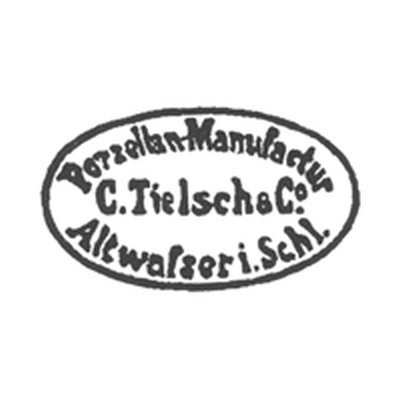
Image 020701-01-13
Used between 1880 and 1885.
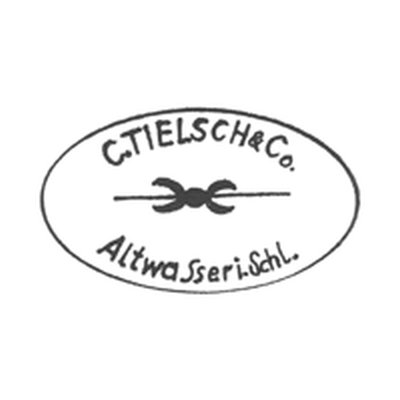
Image 020701-01-14
Used between 1880 and 1885.
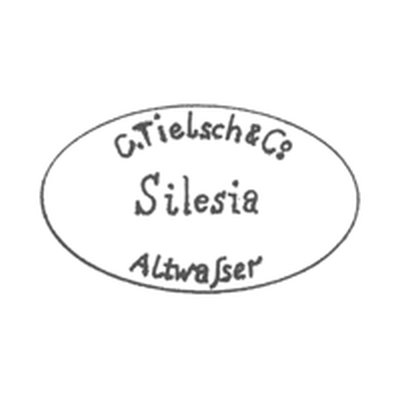
Image 020701-01-15
Used between 1880 and 1885.
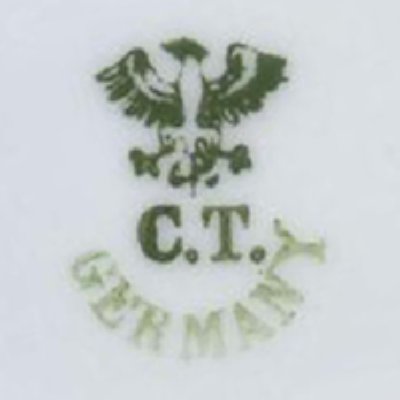
Image 020701-01-16
Used since 1887. In this example, the "Germany" was stamped underneath in a slightly different color; versions with smaller writing are also known.
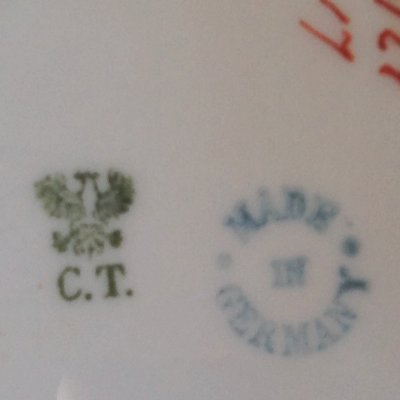
Image 020701-01-17
Used since 1887, here an example with circular "Made in Germany" addition.
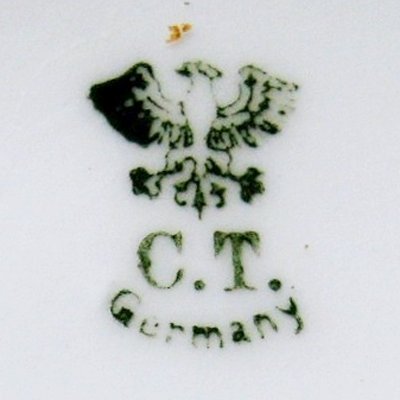
Image 020701-01-18
Used since 1887.
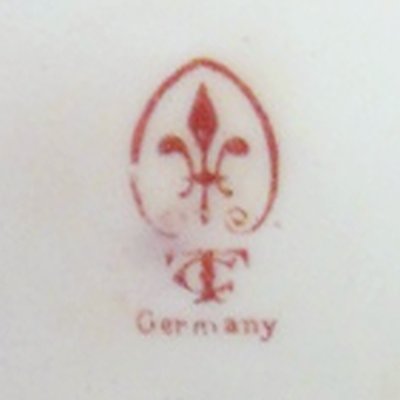
Image 020701-01-19
Used between 1895 and 1917, registered (without "Germany" addition) at the Königliches Handelsgericht Waldenburg on March 22nd 1895.
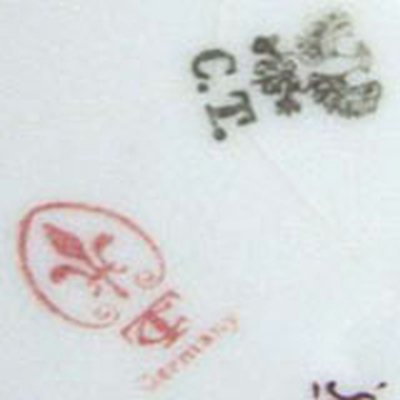
Image 020701-01-20
This example shows a double marked base and the marks used date it between 1895 and around 1900.
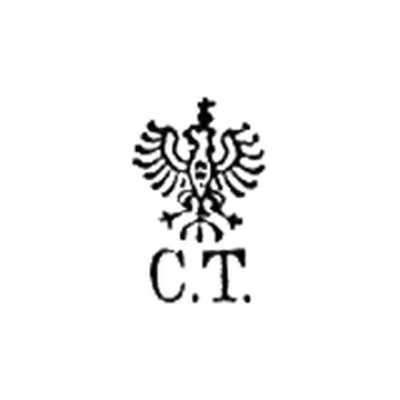
Image 020701-01-21
Used around 1900.
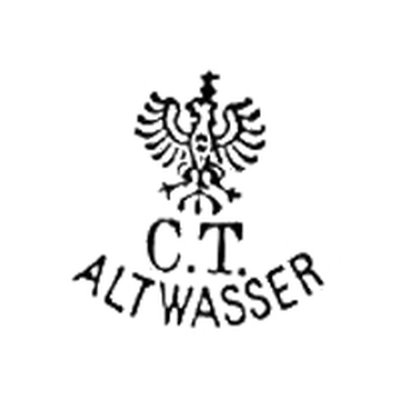
Image 020701-01-22
Used around 1900, note the similarity to the mark registered and used from 1909 onwards.
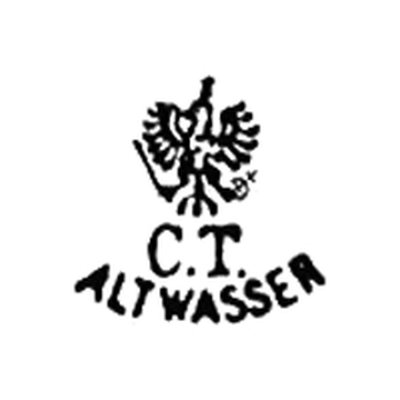
Image 020701-01-23
Used around 1900, with scepter and orb.
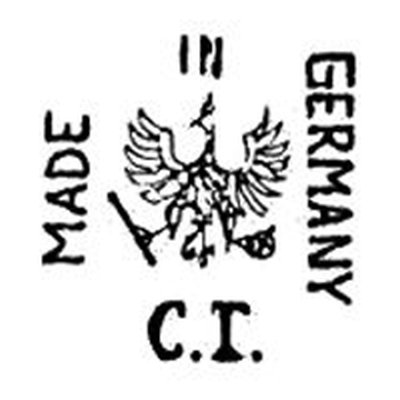
Image 020701-01-24
Used around 1900.
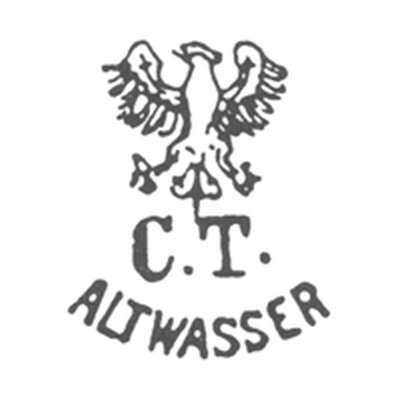
Image 020701-01/02-01
Used between 1909 and 1930, registered at the RWZR under №·117·665 on May 13th 1909.
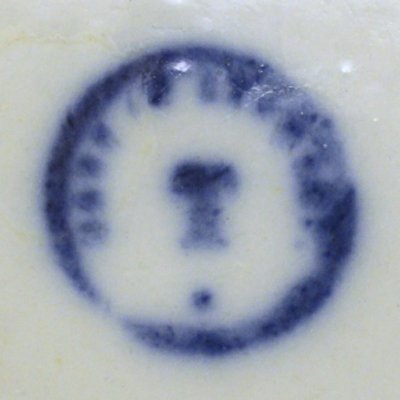
Image 020701-02-01
Used some time between 1918 and 1939 on special export items, a mark not directly linked to Tielsch as it helped to underrun existing contracts.
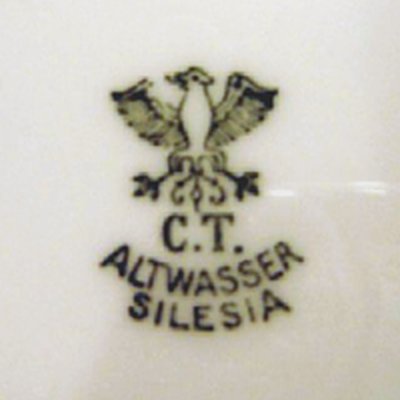
Image 020701-02-02
Used around 1925, note the "Silesia".
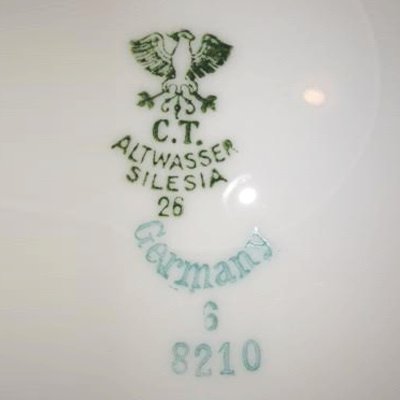
Image 020701-02-05
Used between 1925 and 1932, "Silesia" and additional "Germany".
(Picture by Diane Ricciardelli)
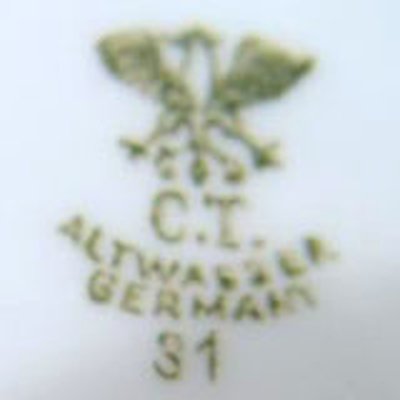
Image 020701-02-06
Used between 1925 and 1932, without "Silesia" but with included "Germany".
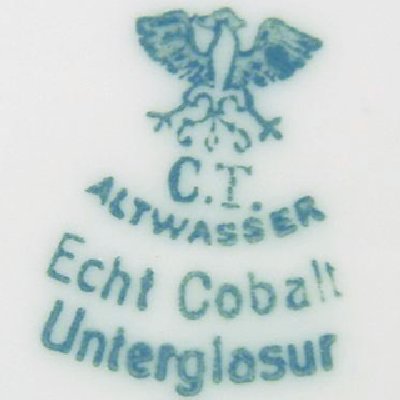
Image 020701-02-07
Used between 1925 and 1932.
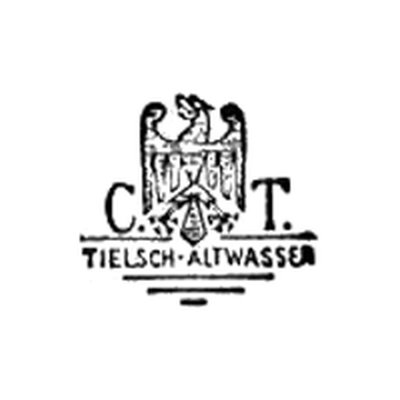
Image 020701-02/03-01
Used between 1931 and 1939, registered at the RWZR under №·433·342 on March 21st 1931.
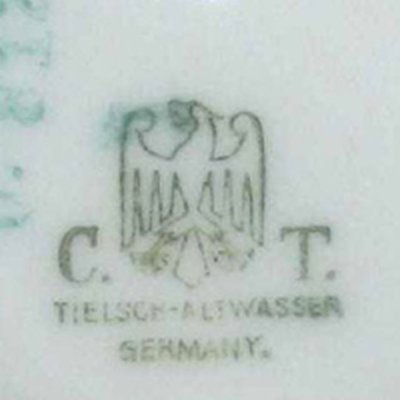
Image 020701-02/03-02
Used between 1931 and 1939.
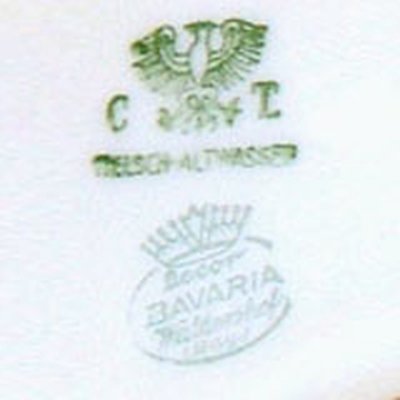
Image 020701-03-01
Used between 1932 and 1935, hence no year addition. Item (re)decorated by Neunkirchner (Waldershof, Bavaria).
(Picture by Janie Tabor)
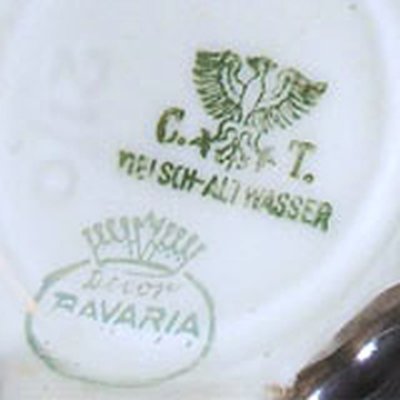
Image 020701-03-02
Used between 1932 and 1935, hence no year addition. Same as before, but missing the "Waldershof" part.
(Picture by Janie Tabor)
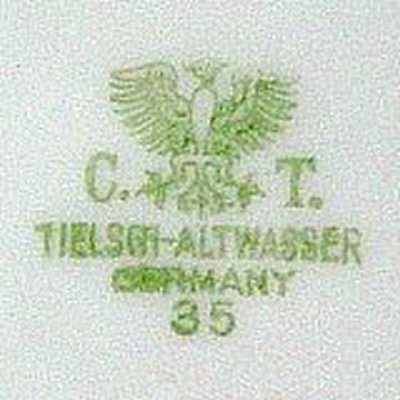
Image 020701-03-03
Normal mark used between 1934 and 1945. Here regular 1935 version.
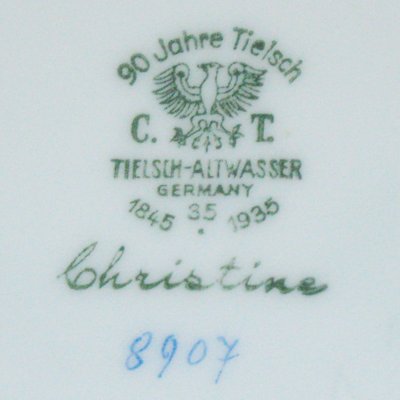
Image 020701-03-04
Anniversary mark used in 1935 on some products. Upper text reads "90 Jahre Tielsch", text underneath states "1845-1935".
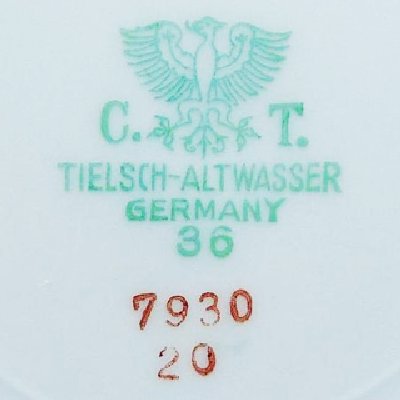
Image 020701-03-05
Used between 1934 and 1945 (here with year "36"), light green.
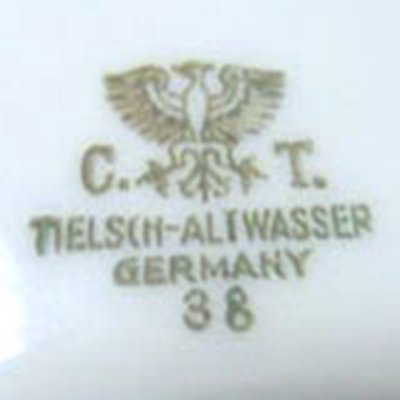
Image 020701-03-06
Used between 1934 and 1945 (here with year "38"), dark green.
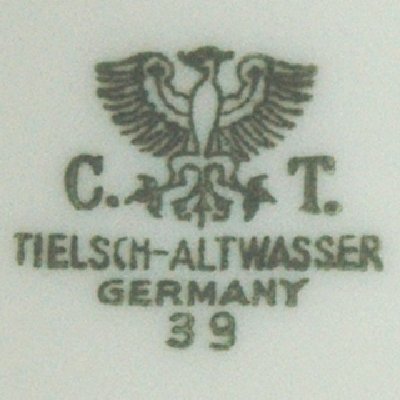
Image 020701-03-07
Used between 1934 and 1945 (here with year "39"), dark green.
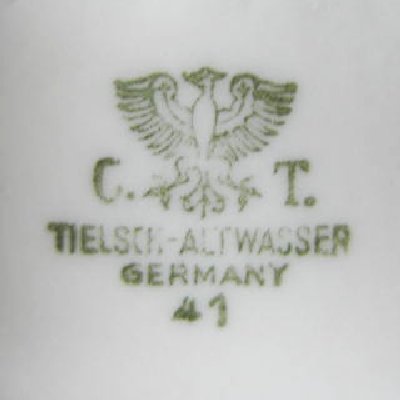
Image 020701-03-08
Used between 1934 and 1945 (here with year "41"), dark green.
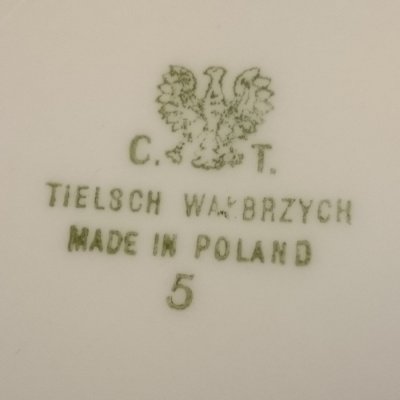
Image 020701-04-01
Used during 1945 and 1952.
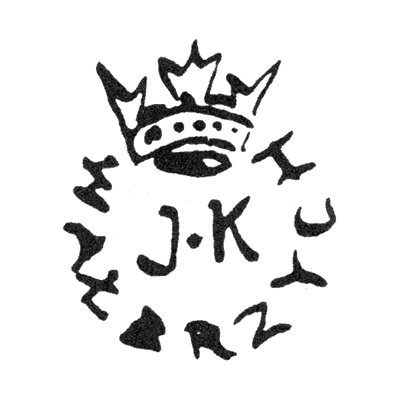
Image 020701-04-02
Used during 1945 and 1952, initials "JK" for Jan Kachniewicz.
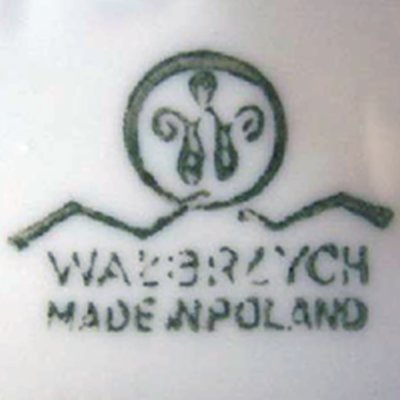
Image 020701-05-01
Used between 1952 and 1992.
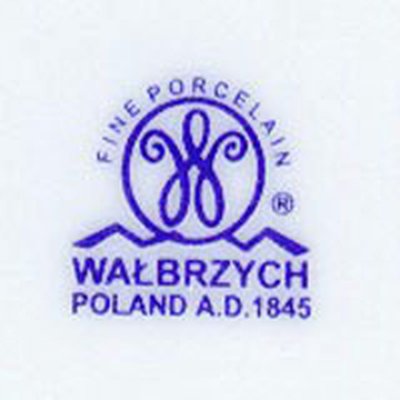
Image 020701-06-01
Used between 1992 and 2007.
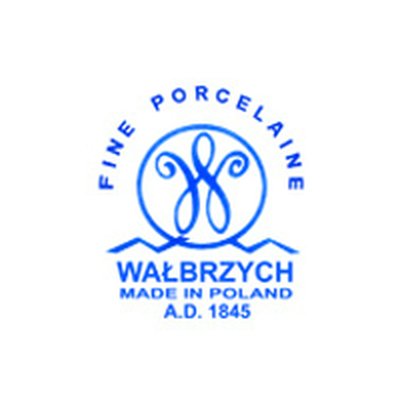
Image 020701-06-02
Used between 1992 and 2007.
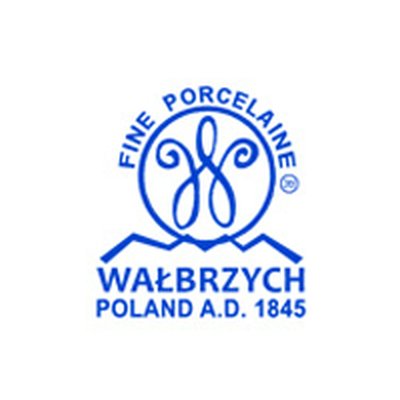
Image 020701-07-01
Used from 2007 onwards.
© 2004-2025 C.S.Marshall, all rights reserved